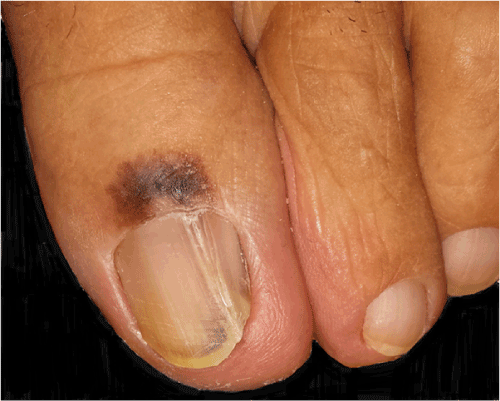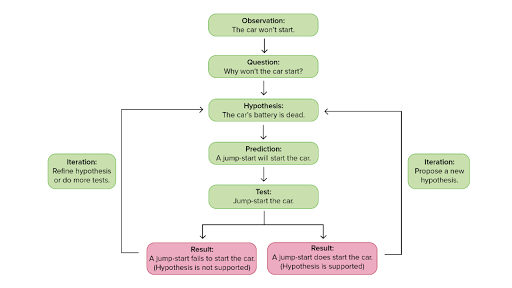As earlier mentioned, if a patient shows any signs of malignant hyperthermia, it is important that an immediate response is given to avoid any further complications.
Certain mutations in genes increase the risk of a person having malignant hyperthermia. malignant hyperthermia (mh) is a rare, inherited musculoskeletal syndrome that presents as a hypermetabolic reaction triggered by exposure to volatile anesthetic gases (e.g., desflurane, enflurane, halothane, sevoflurane) or the depolarizing muscle relaxant, succinylcholine. The earlier an mh episode is recognized and treated, the better patients do. Despite the rarity of malignant hyperthermia, healthcare facilities that use known triggering agents must be fully prepared to treat it. The problem is severe and life threatening, but it can be treated.

What drug class must be avoided due to its potential to cause cardiac arrest in presence of dantrolene?
This genetic condition has been identified in quarter horses and american paint horses. What is the initial dose of dantrolene for malignant hyperthermia treatment? Specifically, this reaction occurs in response to some anesthetic gases, which are used to block the sensation of pain, either given alone or in combination with a muscle relaxant that is used to temporarily paralyze a person during a surgical procedure. malignant tumors contain cells that are cancerous, growing out of control and capable of. The role of keith ellis, ph.d. malignant hyperthermia must be treated rapidly in order to avoid a fatal outcome. Dantrolene sodium is a postsynaptic muscle relaxant with multiple indications in the fields of anesthesiology and neurology. This abnormality in muscle metabolism can be triggered by avariety of agents (particularly During the surgery, he develops malignant hyperthermia (mh). If the recovery room is not available, notify the pharmacy department of the malignant hyperthermia event. This problem runs in families (genetic). In patients at risk for malignant hyperthermia (mh), these drugs can induce a severe crisis by causing. These triggers create an increase of calcium, which eventually causes hyperthermia and possibly death.
The child unfortunately died in the absence of. These triggers create an increase of calcium, which eventually causes hyperthermia and possibly death. treatment of malignant hyperthermia rapid cooling of the body. malignant hyperthermia is a rare condition that occurs in susceptible patients exposed to triggering anesthetic agents. malignant hyperthermia susceptibility revealed by increased serum creatine kinase concentrations during statin treatment.

The role of keith ellis, ph.d.
In people with the muscle abnormality, muscle cells have an abnormal. Treat the patient with dantrolene. As earlier mentioned, if a patient shows any signs of malignant hyperthermia, it is important that an immediate response is given to avoid any further complications. The reaction is caused by genetic abnormalities in proteins that control muscle function. In the recovery room malignant hyperthermia cart, and the pharmacy department. Symptoms of mh include increased carbon dioxide production, hyperthermia, muscle rigidity, tachypnea, tachycardia, acidosis, hyperkalemia, and. An analysis of cases from the north american malignant hyperthermia registry. Despite the rarity of malignant hyperthermia, healthcare facilities that use known triggering agents must be fully prepared to treat it. This means it's passed down from parents to children. Labrador retrievers in particular may exhibit symptoms of malignant hyperthermia during times of stress. Incidence estimated at 1:10,000 and 1: Database analyses and systematic review anesthesiology (january 2019) early development, identification of mode of action, and use of dantrolene sodium: Due to this reason malignant hyperthermia is also termed as "canine stress syndrome."
Treat the patient with dantrolene. malignant hyperthermia can occur at any time during the intraoperative and postoperative periods. Doctors then give the drug dantrolene (dantrium). An analysis of cases from the north american malignant hyperthermia registry. The earlier an mh episode is recognized and treated, the better patients do.

This abnormality in muscle metabolism can be triggered by avariety of agents (particularly
Triggered by exposure to certain drugs or stressors, clinical signs include sudden and dramatic rise in body temperature, muscle fasciculation, muscle rigidity, tachypnea, tachycardia, arrhythmia, myoglobinuria, metabolic acidosis, renal failure, and death. Despite the rarity of malignant hyperthermia, healthcare facilities that use known triggering agents must be fully prepared to treat it. Rowshan, dds malignant hyperthermia (mh) is an uncommon and potentially lif. How to use malignant in a sentence. Symptoms of mh include increased carbon dioxide production, hyperthermia, muscle rigidity, tachypnea, tachycardia, acidosis, hyperkalemia, and. malignant tumors contain cells that are cancerous, growing out of control and capable of. Dantrolene sodium is a postsynaptic muscle relaxant with multiple indications in the fields of anesthesiology and neurology. Fulminant malignant hyperthermia reactions may have only a few of the usual signs. malignant hyperthermia is a genetically transmitted complication of general or local anesthesia, with a high mortality rate. In people with the muscle abnormality, muscle cells have an abnormal. The role of keith ellis, ph.d. This authoritative and comprehensive 1996 publication looks in depth at a range of medical syndromes characterised by serious and unpredicted internal overheating of the body. Mhaus developed and promulgated standardized treatment guidelines for mh patients.
10+ Malignant Hyperthermia Treatment PNG. ( 29600483) mh usually occurs intraoperatively or in the very early postoperative period (up to an hour after finishing anesthesia). malignant hyperthermia can occur at any time during the intraoperative and postoperative periods. The role of keith ellis, ph.d. Dantrolene sodium is a postsynaptic muscle relaxant with multiple indications in the fields of anesthesiology and neurology. Patient's temperature was 41.7℃, there was general muscle contractures and increased levels of serum and urine myoglobin.






